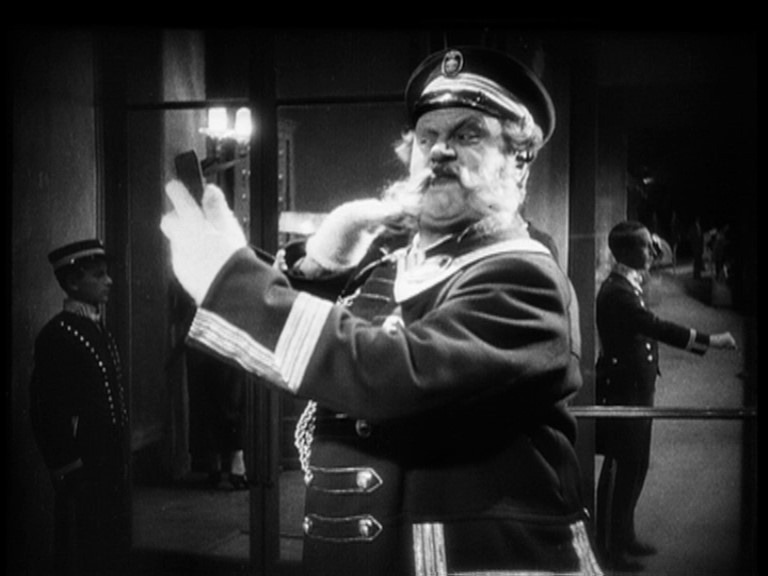Last Laugh, The (1924)
“In consideration of your long service with us, we have found another position for you.”
|
Synopsis: |
|
Genres, Themes, Actors, and Directors:
Response to Peary’s Review: The Last Laugh is ultimately more of a cinematographic fable than a traditional full-length feature, given several factors: its rather limited narrative scope; the lack of any names given to the characters (Jannings is simply “The Hotel Doorman”); the lack of inter-titles (though written notes are occasionally used to good effect); and the admittedly “tacked on”, unrealistically happy ending. To that end, I disagree with Peary’s complaint that the epilogue “just doesn’t mesh with what went before”; instead, I see it as simply further evidence that the entire narrative is meant to be viewed from the doorman’s perspective. After all, the extreme reactions of his neighbors and family members — both to the glory of his original position, and the shame of his debasement — defy logic; therefore, the happy ending seems to nicely represent simply an extension of Jannings’ ongoing fantasies and delusions. Regardless, what’s most impressive about the film is — as both Peary and Savant point out — its visual inventiveness, making it an early classic film fanatics won’t want to miss seeing at least once. Redeeming Qualities and Moments: Must See? Categories
(Listed in 1001 Movies You Must See Before You Die) Links: |




One thought on “Last Laugh, The (1924)”
A once-must, for its place in cinema history.
As I see it, it seems Murnau could always be counted on for visual flair as a filmmaker – but sometimes those wanting an equal balance with story (well, like yours truly) may be left wanting. Of his major films, ‘Nosferatu’, ‘Faust’ and ‘Tabu’ blend visuals with narrative rather well (in refreshingly unorthodox ways). I don’t see the same being said for ‘The Last Laugh’ or ‘Sunrise’. (I’m curious to see ‘City Girl’, which I don’t think I’ve ever seen.)
If, as an audience member, you’re willing to place very little emphasis on story while watching ‘The Last Laugh’, what you absorb with your eyes may see you through nicely. That certainly was the case with me the first time I saw it many years ago. I never returned to the film after that first visit (until now) – and I think that’s because it not as strong as other Murnau films. One of the main weaknesses – as brought out here – is that much of the story defies logic. And that’s distracting.
Still, Murnau plays the dual theme of aging and alienation almost like a horror film in many places. (Such a tone comes through not only visually but also via the impressive score.) And that edge does give the film some genuine power. (In other places, the film is by turns overly sentimental or over-played, or – as witness the whole final sequence – unconvincing in its inconsistency.)
For me, the film’s lengthy opening sequence is the film at its best.